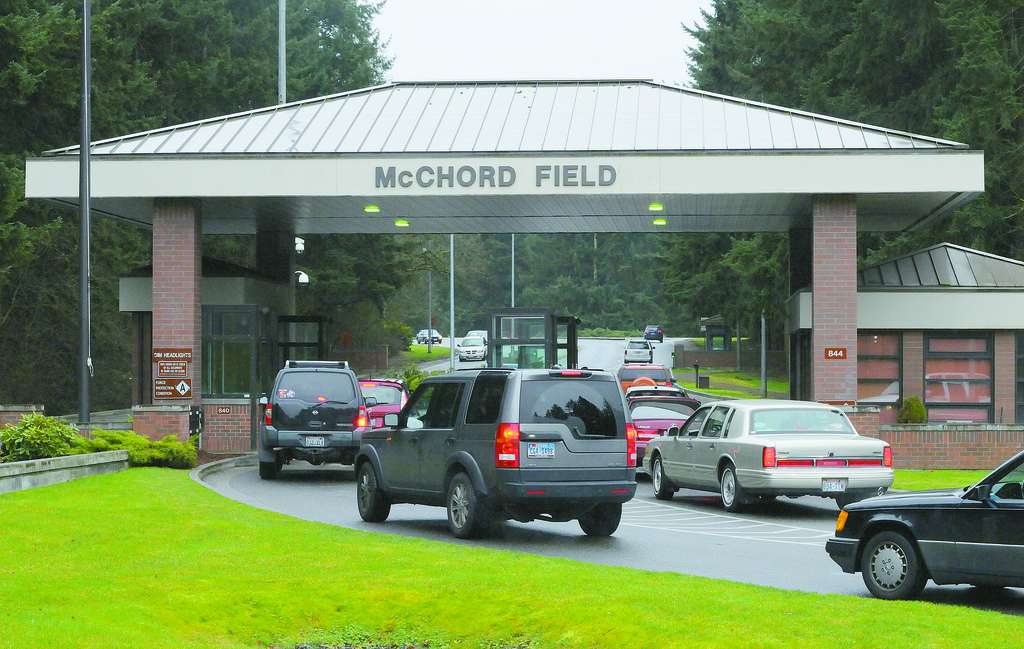Joint Land Use Study
About The Joint Land Use Study

The 2015 JBLM JLUS was a collaborative process among federal, regional, and local governments and agencies; tribes; the public; and the south Puget Sound region’s military installations: Joint Base Lewis-McChord (JBLM) and Camp Murray. The study was designed to create a collective regional dialogue around the sometimes complex issues of balancing military operational demands and mission changes with the region’s and local communities’ land use plans, economic development and infrastructure needs, and goals for environmental sustainability. The study area generally encompassed those communities within two miles of the JBLM boundary.
The JBLM JLUS is a four-part planning process that starts with understanding conditions and issues in the study area and then identifying both current and foreseeable compatibility challenges based on land use, growth and development trends, and civilian and military interestts and mission needs. Compatibility challenges can occur when military operations produce impacts, such as noise that affect surrounding communities or when civilian growth and development interfere with the ability to conduct military operations safely and effectively.
Based on analysis and public and agency feedback, the JLUS then developed recommendations to promote greater compatibility between military activities and civilian land uses. The process concluded with a detailed look at action steps to implement recommendations. These recommendations are not binding, but participants are asked to make a good faith efforts to implement proposed action steps.
Involvement by the public and participating agencies was emphasized at all stages of the planning process.
Phase 1: Existing Conditions – Spring 2014 through Winter 2015
Phase 2: Compatibility Analysis – Winter 2015 through Spring 2015
Phase 3: Plan Development – Summer 2015
Phase 4: Implementation – Summer 2015
Goals
South Puget Sound cities and counties periodically update their Comprehensive Plans to stay in compliance with the Washington State Growth Management Act (GMA). By collaborating with JBLM during this process, local communities’ land use plans can be evaluated for existing or potential conflicts with the military installation’s operations. Where incompatibilities are identified, technical staff and leaders from both on-base and off will work together in good faith to develop recommendations — for example, zoning amendments, or new policies — that will, if implemented, protect the long-term sustainability of the installation while also supporting the communities’ needs.
2015 Joint Land Use Study Documents:
- What is the 2015 JBLM JLUS all about?
- Executive Summary
- Existing Conditions Report
- Land Use Compatibility Analysis
- Implementation Plan
- Land Use Map Handout
- Clear Zone Project Description
- 1992 JBLM Joint Land Use Study
Joint Land Use Study Participating Agencies:
- South Sound Military and Communities Partnership (SSMCP)
- Thurston Regional Planning Council (TRPC)
- Tacoma-Pierce County Chamber
- Pierce County
- Thurston County
- City of Lakewood
- City of DuPont
- City of Tacoma
- Town of Steilacoom
- City of Lacey
- City of Yelm
- City of Roy
- City of Rainier
- Nisqually Indian Tribe
- Office of Economic Adjustment (OEA)
- Washington State Department of Commerce
- Tacoma-Pierce County Health Department
- Joint Base Lewis-McChord Headquarters and staff
What About Transportation?

The JBLM JLUS incorporates regional transportation work already in progress by WSDOT and other South Puget Sound partners. The JLUS does not include a separate transportation study.
To learn more about the ongoing work on the I-5 JBLM corridor, we encourage you to visit the WSDOT project page .
What is land use compatibility?
Compatible uses are defined as land uses that:
- Do not interfere with military training and operations.
- Include civilian and JBLM land uses that exist harmoniously alongside each other.
- Do not expose people to undue safety risks or nuisance.
- Maintain quality of life.
- Balance safety, growth, and development.
What are the issues?
- Urban Growth – Growing urban areas increase the potential for land use conflicts between civilian and military uses.
- Aircraft Safety – Uses that concentrate people like higher density commercial and residential or schools and hospitals should not be located in areas with higher potential for aircraft accidents.
- Aircraft and Weapons Noise – Noise sensitive uses like residential or schools may be affected by noise from aircraft and training operations.
- Threatened and Endangered Species – Species protection requirements create restrictions on JBLM training operations. JBLM and regional partners are working to protect and restore valuable prairie habitat.
- Transportation – Traffic that comes with a rapidly growing region affects JBLM and its neighbors.
- Unauthorized Use of Training Lands – Unauthorized uses of JBLM training lands put civilians and soldiers at risk.
- Communication and Coordination – Cooperative planning between JBLM and neighboring communities will minimize future land use conflicts.
What is being done?
JBLM and South Sound communities are working together to identify strategies to increase communication, apply land use planning tools, strengthen conservation partnerships, and more.
For more information, contact the South Sound Military & Communities Patrnership at (253) 983-7772.
